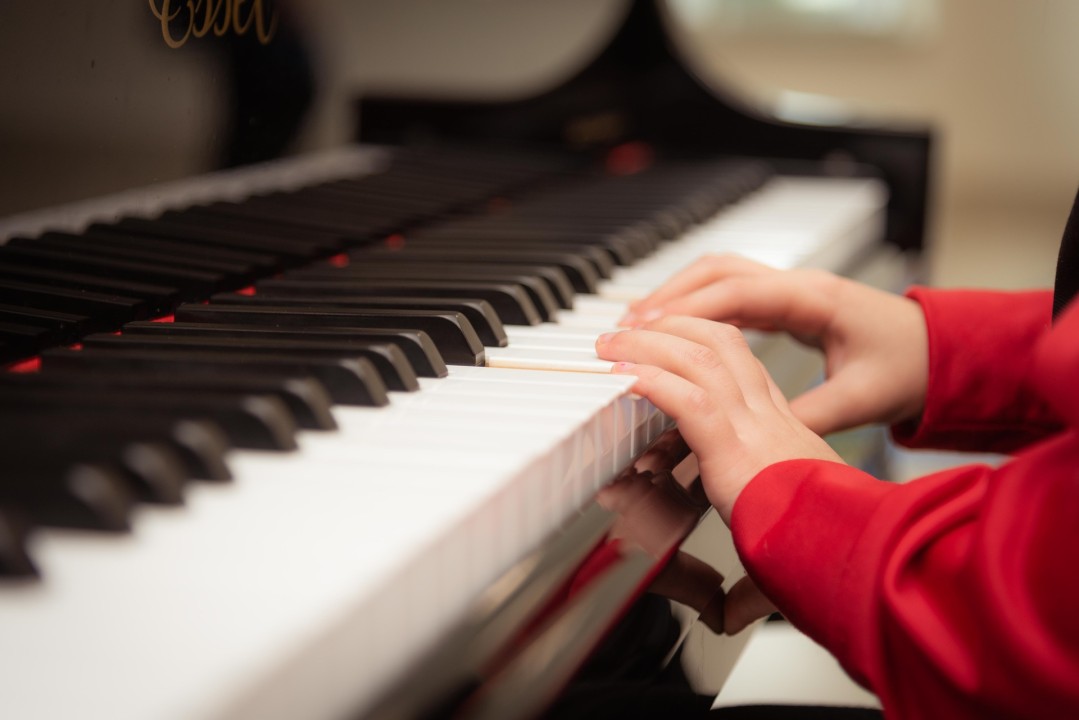
Practicing arpeggios in octaves is a vital exercise for pianists looking to improve their finger strength, coordination, and overall technique. This practice not only enhances the ability to play complex pieces with clarity and power but also contributes to the development of a fuller and more expressive sound. In this article, we explore the benefits of practicing arpeggios in octaves, provide detailed techniques, and offer tips for incorporating them into your daily routine.
The Importance of Arpeggios in Octaves
Arpeggios, the sequential playing of the notes in a chord, are fundamental to piano playing. When practiced in octaves, these exercises present unique challenges and benefits:
- Finger Strength: Playing octaves requires considerable strength and control, particularly in the weaker fingers. Regular practice builds the necessary muscle power.
- Coordination: Octave arpeggios improve hand coordination, as both hands must move in harmony while maintaining evenness and accuracy.
- Range and Flexibility: They help pianists navigate the keyboard more efficiently, covering a broader range with ease.
- Expressiveness: Practicing in octaves enhances the ability to produce a rich, resonant sound, essential for expressive playing.
Techniques for Practicing Arpeggios in Octaves
1. Hand Position and Posture

Young girl playing piano in music lesson
Proper hand position and posture are crucial for effective practice:
- Natural Hand Curve: Maintain a natural curve in your fingers. The thumb and pinky should be relaxed yet firm.
- Aligned Wrists: Keep your wrists aligned with your forearms to avoid strain. Avoid excessive lifting or drooping of the wrists.
- Relaxation: Ensure your shoulders, arms, and hands remain relaxed to prevent tension and injury.
2. Slow and Controlled Practice
Start slowly to build accuracy and control:
- Metronome Use: Begin with a slow tempo using a metronome. This helps in maintaining a steady rhythm and ensures evenness between notes.
- Gradual Speed Increase: Gradually increase the speed as you become more comfortable, maintaining precision and clarity at each tempo.
3. Fingerings and Transitions
Effective fingerings and smooth transitions are key:
- Standard Fingerings: For major and minor arpeggios, use the standard octave fingerings: 1 (thumb) and 5 (pinky). Ensure the thumb plays the root note cleanly.
- Smooth Transitions: Practice transitioning smoothly between octaves, focusing on evenness and minimizing any gaps or jumps in sound.
4. Dynamic Control
Incorporate dynamics to enhance musicality:
- Soft and Loud Practice: Practice arpeggios both softly and loudly to develop control over dynamics. This will help in achieving a more expressive performance.
- Crescendo and Decrescendo: Experiment with gradual increases and decreases in volume to add emotional depth to your playing.
Incorporating Octave Arpeggios into Practice Routines

1. Daily Warm-Up
Use arpeggios in octaves as part of your daily warm-up routine:
- Warm-Up Benefits: Starting your practice with these exercises helps to warm up your fingers and hands, preparing them for more complex tasks.
- Variety in Keys: Practice arpeggios in different keys each day to ensure comprehensive technical development.
2. Focus on Problem Areas
Identify and address specific technical challenges:
- Isolate Difficult Passages: If you encounter difficulty in certain sections, isolate and practice those passages slowly.
- Hands Separately: Practice each hand separately before combining them to improve coordination and confidence.
3. Incorporate into Repertoire
Apply the technique to pieces you are learning:
- Identify Arpeggios in Music: Find sections in your repertoire that include arpeggios and practice those sections in octaves.
- Musical Context: Integrating technical exercises into your pieces helps bridge the gap between practice and performance.
Tips for Effective Practice
- Stay Relaxed: Avoid tension by taking regular breaks and stretching your hands.
- Consistency: Practice regularly, even if only for a few minutes each day, to build and maintain technique.
- Use a Mirror: Practicing in front of a mirror can help you monitor your hand position and posture.
- Listen Carefully: Pay attention to the sound quality, ensuring each note is clear and even.
Conclusion
Practicing arpeggios in octaves is an invaluable exercise for pianists seeking to enhance their technical prowess and expressive capabilities. By focusing on proper technique, incorporating these exercises into daily practice, and applying them to repertoire, pianists can achieve greater agility, strength, and musicality. With consistent practice and mindful attention to detail, mastering arpeggios in octaves will significantly enrich your piano playing.








I’m really impressed with your writing skills and also with the structure on your blog. Is this a paid theme or did you customize it yourself? Either way keep up the excellent quality writing, it’s uncommon to look a nice weblog like this one these days!